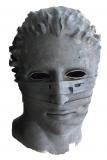Results 1 to 7 of 7
Thread: Extruder comparison
-
06-16-2014, 01:35 PM #1Student

- Join Date
- Jun 2014
- Posts
- 1
 Extruder comparison
Extruder comparison
I'm in the process of designing my first 3D printer and I'm now looking into the various extruder designs but there doesn't seem to be anywhere (at least that I've found) that compares the different designs. I know there's lots of different ones but I think they're often variants of other setups, such as the Wades and Bowden extruder's.
So if anyone could direct me to any information comparing the different extruder designs and explaining their pros and cons that'd be extremely helpful.
Thanks in advance
Andrew
*****Edit*****
I'm intending to work with PLA and ABSLast edited by Andycb; 06-18-2014 at 07:03 AM. Reason: Extra information
-
06-24-2014, 06:50 AM #2Student

- Join Date
- Apr 2014
- Posts
- 27
I swear by the Bowden's. Perhaps I'm biased because that's all I've been using for the past year, but I think they are the best.
-
06-24-2014, 03:15 PM #3Engineer

- Join Date
- Jan 2014
- Posts
- 462
Let's see if I can summarise the basic types - feel free to jump in if I've missed anything.
First variable: direct mount or remote mount. A direct mount extruder mounts directly over the top of the top of the hot end. A remote mount is mounted on a fixed part of the printer chassis and filament is fed between the extruder and the hot end via a bowden tube.
Advantages of the remote mount: removes a lot of weight from the x-carriage, meaning you get faster prints and (depending on how well you built your printer) higher quality prints as less vibration is transmitted to the hot end through movement.
Disadvantages of the remote mount: depending on how you route the bowden tube, you an suffer from something called hysteresis, where the retraction and feed of the filament can cause "slapping" against the sides of the bowden tube and mess with the quality of your prints. You can also get more strings and blobs, depending on how you tune retraction. It is also very, very difficult to print flexible filaments through a bowden (ninjaflex, PVA, etc.). Friction increases which can cause skipped steps if you don't route your bowden well (protip: one curve only - no s-curves). They can be more prone to mechanical failer (e.g. bowden popping off).
Advantages of the direct mount: no hysteresis, easier to print with flexible filaments. Less prone to failure.
Disadvantages of the direct mount: can't print as fast.
Gold: hybrid dual extruder combining remote and direct mounts.
Second Variable: Geared or direct drive. A geared extruder uses gearing to step down the speed of the stepper motor, sacrificing speed for torque (Wade's, etc.). A direct drive uses a hobbed gear on the stepper driver to directly pull filament through the extruder. I'm not aware of much in the way of pros/cons of the two, other than that you can run into problems with a direct drive if your stepper motor isn't beefy enough to pull the filament through. I've used both and found they work equally well.
Gold: Skullstruder (search for it on Thingiverse).
-
06-24-2014, 11:19 PM #4
Interesting breakdown. I'm curious about 'skullstruder' but a Thingiverse and Google search come up with "0" hits.
Bambu P1S/AMS
NVision4D http://nvision4d.com
-
06-25-2014, 01:43 AM #5Engineer

- Join Date
- Jan 2014
- Posts
- 462
My mistake. It's "Skulltruder," not "Skullstruder."
-
06-25-2014, 08:31 AM #6
I suggest you read the Rep Rap Magazine op 3 there was a real nice detailed analysis of the extruders.
http://reprapmagazine.com/
-
06-25-2014, 05:40 PM #7Engineer

- Join Date
- Jan 2014
- Posts
- 462
The RepRap magazine has a good article on hot ends. For the purpose of clarification, OP, are you looking for a comparison of extruders (the motorised part that pushes filament through to the hot end) or hot ends or both?




 Reply With Quote
Reply With Quote






Extruder not feeding during print,...
04-24-2024, 01:59 AM in Tips, Tricks and Tech Help